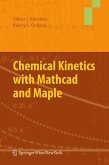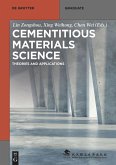This textbook illustrates one-component phase diagrams, binary equilibrium phase diagrams and ternary phase diagrams for ceramics, polymers and alloys by presenting case studies on preparation processes, and provides up-to-date information on nano-crystal materials, non-crystal materials and functional materials. As second volume in the set, it is an extension of the first volume on physical aspect of materials.
Table of Content:
Chapter 1 Deformation and recrystallization of materials
1.1 Elasticity and viscoelasticity
1.3 Plastic deformation of crystals
1.3 Recovery and recrystallization
1.4 Thermal deformation and dynamic recovery and recrystallization
1.5 Ceramics deformations
1.6 Macropolymer deformations
References
Chapter 2 One-component system phase diagrams and solidification of pure crystals
2.1 Thermodynamics and phase equilibrium in one-component system
2.2 Solidification of pure crystals
2.3 Gas-solid phase transformation and film growth
2.4 Crystallization characteristics of polymers
Chapter 3 Binary equilibrium phase diagrams and principles solidification and preparation of alloys
3.1 Expression and measurement of phase diagrams
3.2 Thermodynamics of phase diagrams
3.3 Analysis of binary equilibrium phase diagrams
3.4 Solidification theory of binary alloys
3.5 Polymer alloy
3.6 Ceramic alloy
Chapter 4 Ternary phase diagrams
4.1 Fundamentals of ternary phase diagrams
4.3 Ternary phase diagrams for unlimited solid solubility
4.4 Ternary phase diagrams for limited solid solubility
4.4 Ternary phase diagrams constructed by two binary eutectic systems and one binary isomorphous system
4.5 Ternary eutectic-peritectic phase diagrams
4.6 Ternary peritectic phase diagrams containing four-phase equilibrium reactions
4.7 Ternary phase diagram having stable compounds
4.8 Examples of ternary phase diagrams
4.9 Summary
Chapter 5 Metastable state of materials
5.1 Nanocrystalline materials
5.2 Quasi-crystalline state
5.3 Amorphous materials
5.4 Metastable phase by solid state phase transformation
Chapter 6 Functional characteristics of materials
6.1 Functional materials and physical fundamentals
6.3 Electrical properties
6.3 Thermal properties
6.4 Magnetic properties
6.5 Optical properties
References
Chapter 1 Deformation and recrystallization of materials
1.1 Elasticity and viscoelasticity
1.3 Plastic deformation of crystals
1.3 Recovery and recrystallization
1.4 Thermal deformation and dynamic recovery and recrystallization
1.5 Ceramics deformations
1.6 Macropolymer deformations
References
Chapter 2 One-component system phase diagrams and solidification of pure crystals
2.1 Thermodynamics and phase equilibrium in one-component system
2.2 Solidification of pure crystals
2.3 Gas-solid phase transformation and film growth
2.4 Crystallization characteristics of polymers
Chapter 3 Binary equilibrium phase diagrams and principles solidification and preparation of alloys
3.1 Expression and measurement of phase diagrams
3.2 Thermodynamics of phase diagrams
3.3 Analysis of binary equilibrium phase diagrams
3.4 Solidification theory of binary alloys
3.5 Polymer alloy
3.6 Ceramic alloy
Chapter 4 Ternary phase diagrams
4.1 Fundamentals of ternary phase diagrams
4.3 Ternary phase diagrams for unlimited solid solubility
4.4 Ternary phase diagrams for limited solid solubility
4.4 Ternary phase diagrams constructed by two binary eutectic systems and one binary isomorphous system
4.5 Ternary eutectic-peritectic phase diagrams
4.6 Ternary peritectic phase diagrams containing four-phase equilibrium reactions
4.7 Ternary phase diagram having stable compounds
4.8 Examples of ternary phase diagrams
4.9 Summary
Chapter 5 Metastable state of materials
5.1 Nanocrystalline materials
5.2 Quasi-crystalline state
5.3 Amorphous materials
5.4 Metastable phase by solid state phase transformation
Chapter 6 Functional characteristics of materials
6.1 Functional materials and physical fundamentals
6.3 Electrical properties
6.3 Thermal properties
6.4 Magnetic properties
6.5 Optical properties
References







